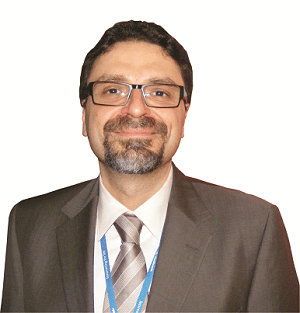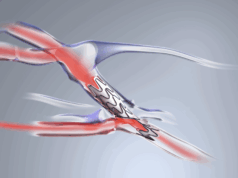
Although arteriovenous (AV) fistulae are considered the gold standard for vascular access for haemodialysis and have a low rate of complications and improved longevity of use when functional, more than 50% fail within one year of creation, necessitating reinterventions with high complication rates, writes Eric Chemla.
The high failure rate is attributed to excessive remodelling and an over thickening of the walls of the vein, in addition to bad haemodynamics near the peri-anastomotic region.
Turbulent flow has been identified as a driver for neointimal hyperplasia and a cause of stenosis. It has been suggested that a laminar flow could be protective and could serve as a predictor for successful maturation in newly formed AV fistulae.
The ideal access for haemodialysis should deliver a sustained flow rate sufficient for long-term utilisation alongside a low rate of significant complications and minimal requirement for assistance, and should be designed to maintain maturation and patency.
The VasQ device (Laminate Medical) is a mechanical approach that is being validated to address fistula failure. VasQ is a nitinol braid surrounding the vein, which is welded to a nitinol brace “hugging” the artery near the junction site without being in contact with the blood flow.
The device is implanted over the anastomosis during the routine suturing of the vein to the artery and requires only minutes to complete. It targets the two main fistula failure modes: turbulent flow around the area of connection and increased venous wall tension due to the exposure to arterial circulation conditions.
The device contains two parts. The first part is the brace that optimises geometrical parameters of the fistula such as the angle of the arteriovenous anastomosis, the radius of curvature, and the diameter ratio between the artery and the vein. This minimises flow disturbances around the anastomosis and mitigates intimal hyperplasia. The second part is the braid that guides reconfiguration of the vein through an external flexible support, allowing the vein a constrained and controlled increase in diameter in a limited fashion in order to accommodate the increase in flow rates while absorbing elevated wall tension and maintaining the integrity of the vein.
In a recent multicentre study in the UK and Israel (St George’s Hospital, London; Guy’s Hospital, London; Southmead Hospital, Bristol; Sheba Medical Center, Tel Aviv), 40 patients were enrolled for a randomised controlled study. Study endpoints were safety, usability, primary access rate, and maturation success over a six-month follow-up period. The first group included treated patients who were implanted with the VasQ device over a brachiocephalic fistula. The second group was a control group including patients with native brachiocephalic fistulae.
The study showed very good unassisted maturation rates for AV fistulae using the VasQ external support device at one- and three-month follow-up, with high primary patency rates.
Due to an ongoing debate regarding the definition of a matured fistula that would be successful for two-needle dialysis, the maturation results refer to two rules:
1. “Rule of six” in fistula assessment — at six weeks post-creation the diameter of the body of the fistula should be at least 6mm and the depth no more than 0.6cm. The blood-flow rate should be 600mL/min or more by this time. The length of the fistula should be 6cm to allow for a successful two-needle dialysis.
2. “Rule of five” in fistula assessment — at five weeks post-creation the diameter of the body of the fistula should be at least 5mm and the depth no more than 0.5cm. The blood-flow rate should be 500mL/min or more by this time. The length of the fistula should be 5cm to allow for a successful two-needle dialysis.
Our results showed that at one-month follow-up, the maturation rate of the first group (implanted with VasQ) was higher than in the control group, according to both the rule of six (78% and 67%, respectively) and the rule of five (88% and 80%, respectively). At three-month follow-up you can see the same trend in maturation rate: 96% in the treated group for both rules compared to 78% and 89% in the control group.
This study also showed high primary patency rate at six-month follow-up (83%). These results support the results of a previous study in which 20 patients showed 79% primary patency rate and exceed the results of three other main studies which reported primary patency rates of between 50% and 60%.
In summary, the use of VasQ in autogenous brachiocephalic AV fistulae is associated with higher short- and medium-term maturation and patency rates for externally supported AV fistulae than previously reported. VasQ may obviate some of the problems implicated in early AV fistula failure by providing a fixed outflow diameter and shielding the anastomosis from adhesions and inflammatory reactions.
Eric Chemla is a consultant renal transplant and vascular surgeon at St George’s Healthcare NHS Trust, London, UK












